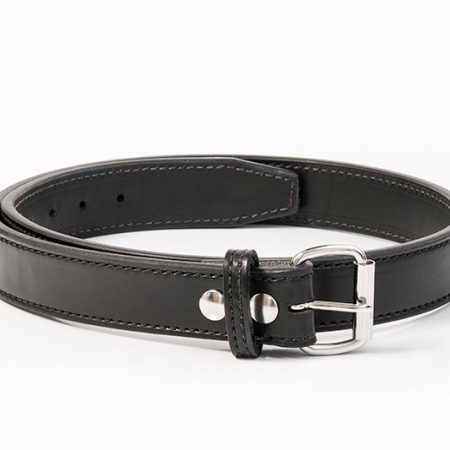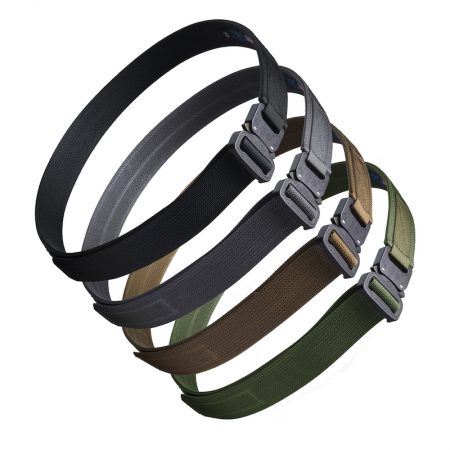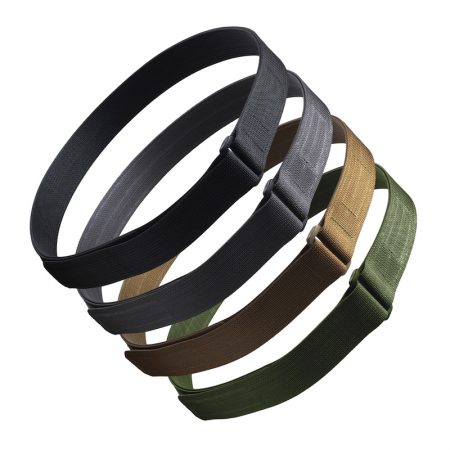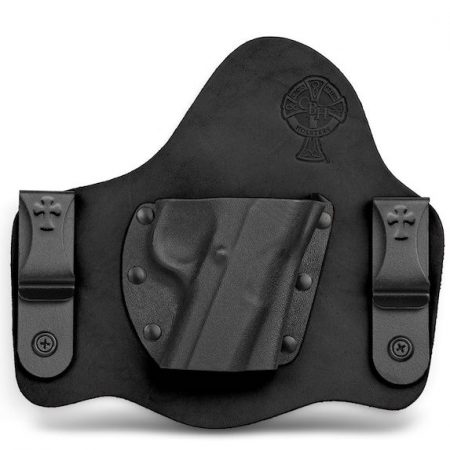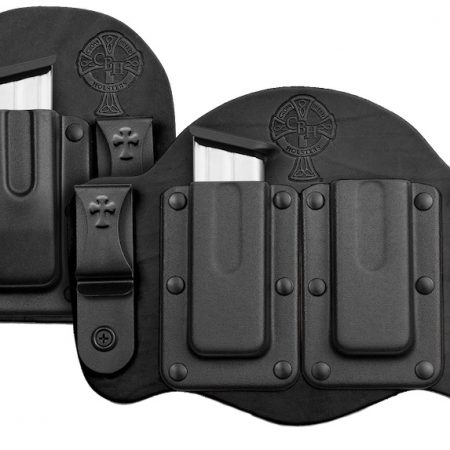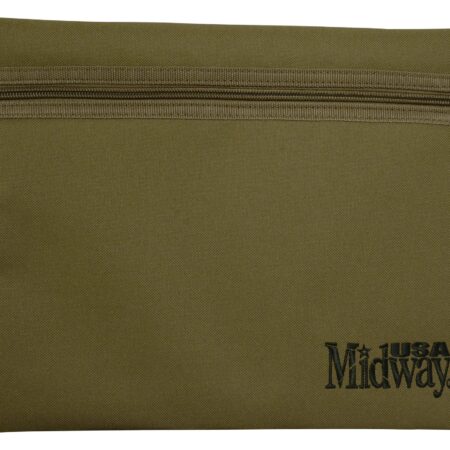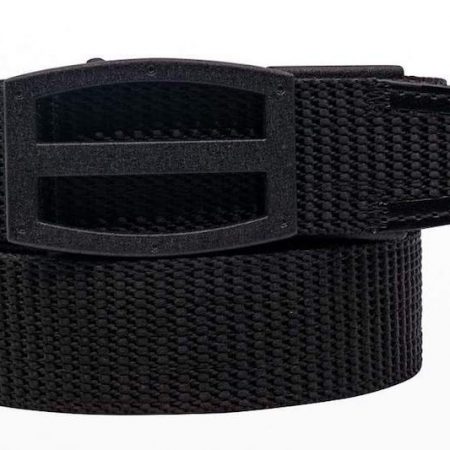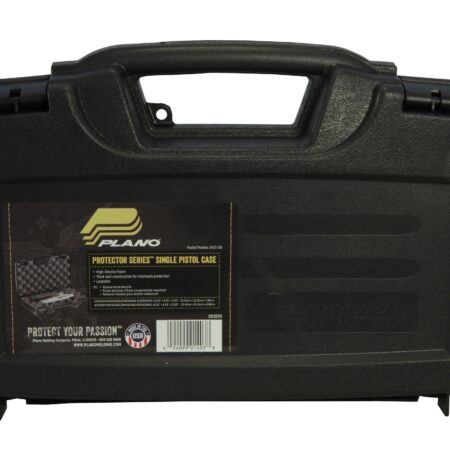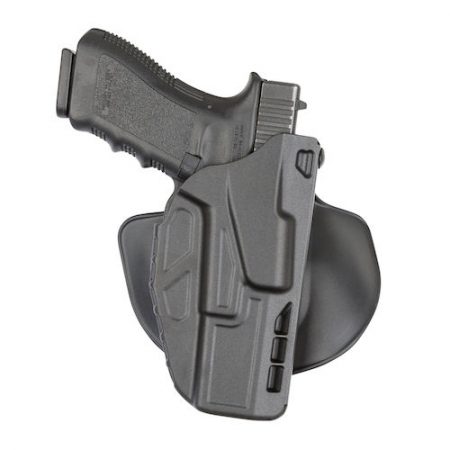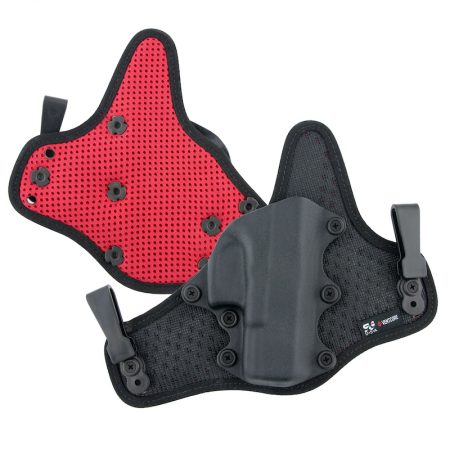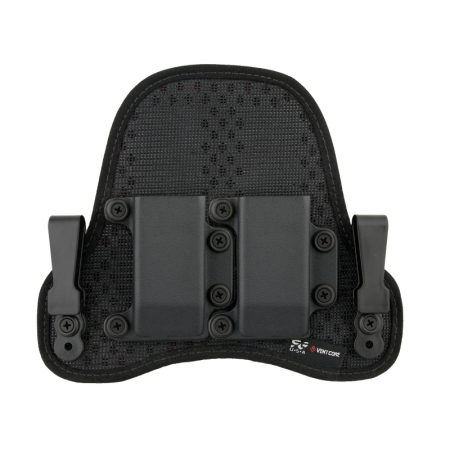What to Bring—Intro to Defensive Pistol
The most common question we are asked is “what to bring?” This page provides some guidelines that will ensure you have the best experience at one of our events. The specific products and vendors below are just suggestions or examples of a type of product that may work well for you. There are many other similar gear options.
All Events
- Our volunteers are neither gunsmiths nor armorers; please ensure your firearm is safe and functional!
- Eye and ear protection is required at all events. We highly suggest electronic ear protection as it makes it easier to hear instruction and line commands.
- Use only the correct ammunition for your gun. Most guns have the proper ammunition type stamped on the barrel. Do not shoot without the proper ammunition. Revere’s Riders strongly suggests the use of factory ammunition. Handloads are generally not necessary at our service-rifle and pistol inspired events—originally these events were intended to be fired with bulk issue “ball” ammunition!
- Dress appropriately for a day outside at a firing range (closed-toe shoes, high neck shirts, long sleeves if weather allows, etc). Our events occur rain or shine. Dress for the weather!
- Avoid loose-fitting clothing, especially around the neck line. You don’t want hot brass going down your shirt!
- A hat with brim will keep the sun out of your eyes and deflect any hot brass headed towards your face.
- Bring a pad and paper for taking notes.
- Bring a pen or marker for taking notes and marking your targets.
- You may want to bring gloves. They protect your hands in inclement weather and also keep your hands from getting torn up working through drills.
- A towel or mat is useful for using in the prone position as well as covering your firearm in inclement or hot weather during breaks.
- A folding chair is nice to have during lunch and history presentations.
- For full day events, pack a lunch (note that a few events will provide lunch; the event listing will specify if lunch will be provided).
- Bring snacks and water. Proper hydration is essential—in the summer plan on one quart per hour as a rule of thumb and supplement your water with sports drinks, salty snacks, etc.
We have a selection of recommended general safety equipment on the What to Bring–All Events page.
Intro to Defensive Pistol
Most important is to bring a safe and functional pistol. If you haven’t cleaned your pistol, setting aside time before the event to clean it would be a good idea. If you have doubts about the safety of your pistol, now would be a good time to have it looked over by a qualified gunsmith or armorer. Please note that you should leave any pistol that is not “drop safe” at home (see below).
- Pistol Type: We suggest you bring the pistol you intend to conceal carry.
- Caliber: Since this course is geared towards those that will conceal carry their pistol, a pistol chambered in a center-fire caliber is highly recommended. Generally, this means 9x19mm, .40 S&W, .45 ACP or similar; you can get by with .380 ACP but many consider this caliber to be borderline effective.
- Magazines: A minimum of two magazines are necessary to participate in our defensive pistol courses without having to resort to reloading of magazines during a drill. More magazines are better; especially if you have a “low capacity” pistol that utilizes magazines that hold less than 10 rounds.
- Holsters: You will need a quality holster (either IWB or OWB; appendix, small-of-the-back, shoulder and other holsters are not permitted) that FITS YOUR PISTOL. Your holster should completely cover the trigger guard to prevent an unintentional discharge while your pistol is holstered. Retention holsters are not recommended as they add extra complexity to the draw stroke that is really more appropriate in more advanced courses.
- Magazine Carriers: You will want a comfortable method of carrying extra magazines on your person. Generally, this means a carrier designed for 1-2 magazines that is positioned on your weak side opposite your holster. In a pinch, you can get by with carrying extra magazines in a pocket.
- Drop safe pistol: Older single-action pistols manufactured before the 1980s and lacking a transfer bar safety are the most common type of pistol that lack drop safe design features, as do some military surplus imports from Eastern bloc countries, Taurus PT-series pistols not fixed during an international safety recall in 2015, Walther CCP series pistols not fixed during a safety recall in 2017, Sig P320 pistols not fixed during a safety upgrade in 2017, and Canik pistols not fixed during a Severe Duty Upgrade in 2017. These pistols may discharge if dropped and pose a potential safety hazard to our volunteers and students and are not permitted. If you have concerns about the safety features of your pistol you should have it inspected by an armorer or gunsmith before the event.
Recommended Intro to Defensive Pistol Equipment
Below is a list of equipment that our instructors have found to be functional, durable and useful:
-
Buy from Bigfoot Gun BeltsMORE INFO
Bigfoot Gun Belts 14oz Leather Gun Belt
Bigfoot Gun Belts feature the following:
- Spring Steel Core—strengthened by a spring steel core, a Bigfoot belt provides the maximum vertical and horizontal hold once in place, but doesn’t ever take a permanent crimp.
- English Bridle Leather—English Bridle Leather is a type of full-grain leather, the highest quality leather there is. Full-grain leathers are the top-most layers of hide, making them quite strong, yet supple. Bridle leathers are made by treating full-grain leather with natural tannins, oils and preservatives, rendering a matte-like finish and subtle texture. The result is a piece of leather that will break in overtime but never lose strength.
- Heavy Duty Thread—Tex 270 is a heavy-duty bonded nylon thread that, like bridle leather, is heavy-duty and high-quality. This type of thread is usually reserved for industrial or other heavy applications.
- Corrosion-Resistant Hardware—we use steel roller buckles, available in flat black or standard steel colors, in order to ensure a lifetime of function and durability. The roller buckle allows you to smoothly insert the gun belt when putting it on. To anchor the belt buckle, we employ heavy-duty directional snap fasteners, which hold more strongly than universal snaps.
- Triple Edge Finishing—Bigfoot’s craftsmen painstakingly finish the edges when the belt is stitched together. The edges are beveled, and the top is burnished, which softens the belt’s edges. Then, the edges are painted along the entire edge of the belt, giving it a uniform appearance.
- Double Layered Leather—Dual layers of leather provide strength for a lifetime of wear, but the smooth surface makes guiding through belt loops a breeze.
-
Buy from CrossbreedMORE INFO
Crossbreed SuperTuck IWB Holster
The revolutionary CrossBreed® SuperTuck® is the most comfortable and concealable inside the waistband (IWB) holster you’ll ever wear. Designed exclusively and patented by CrossBreed® Holsters, the flagship SuperTuck Deluxe® is hand molded to fit each specific firearm listed. It features a premium leather backing with a molded and mounted Kydex pocket. Versatile for carry options, the SuperTuck may be worn comfortably with or without your shirt tucked in – based on your personal carry style. The SuperTuck is designed to be carried towards the rear of your draw side – 3:30 to 5 o’clock for a right-hand draw or 7 to 8:30 for a left-hand draw.
-
Buy from MidwayUSAMORE INFO
MidwayUSA Range Bag Pistol Case
Measuring 13.5″ x 10″, this case fits a variety of handguns. Constructed of durable 400D PVC coated polyester and a heavy duty zipper, this case can be used as a stand alone gun case, incorporated into your current range bag, or as part of your MidwayUSA Competition Range Bag System.
-
Buy from MidwayUSAMORE INFO
Plano Protector Single Pistol Case
Featuring thick-wall construction, molded-in handles secure latches and padlock tabs for secure storage this Plano case holds a single pistol with room for accessories. The Protector Series of cases offer one of the best value to price relationships available.
-
Buy from SafarilandMORE INFO
Safariland ALS Holsters
The AUTOMATIC LOCKING SYSTEM (ALS®) is the next evolution in retention holsters and builds upon the successful SELF LOCKING SYSTEM (SLS). With many patents to its credit, the key to this system is an internal locking device that secures the weapon in all directions simply upon re-holstering, providing Level I or III Retention™ which can also be elevated to Level IV Retention™ with the addition of the Sentry. Additionally, holsters with this all-new ergonomic design are completely operable with the thumb making training easy, and the straight up draw makes them very instinctive to use, yet difficult for an assailant’s attempted takeaway. And finally, once the retention devices are released, the weapon can be drawn straight out of the holster with no twisting or other motion required.
-
Buy from StealthgearMORE INFO
Stealthgear VentCore IWB Holsters
The Ventcore® Inside-the-Waistband (IWB) Standard holster is the original breathable holster. Since 2012, it has seen numerous updates and is still the most comfortable hybrid holster for carrying a full-frame firearm, like a Sig Sauer P226 or Glock 17, while maintaining exceptional concealability. The extended holster platform of the IWB Standard allows for the weight of a full-frame firearm to be evenly distributed around the belt line. This results in a comfortable, all-day concealed carry solution.
-
Buy from StealthgearMORE INFO
Stealthgear VentCore Mag Carrier
StealthGearUSA VentCore® IWB Mag & Utility Carrier Details:
- VentCore® platform
- Fully adjustable retention
- Interchangeability of various mag sizes
- Black oxide stainless steel fasteners
- Available in single or double mag
- Hand built in the USA

